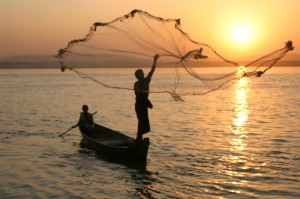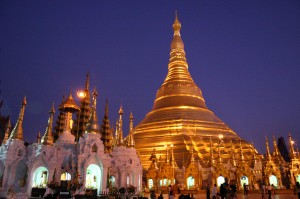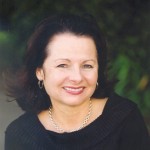Uncovering the Best of Burma: An Insider’s Guide
It was with a bit of trepidation that Carmel Valley resident Cynthia Dial ventured half way around the world to visit Burma, a country where journalists are not exactly extended the welcome mat; but if given the opportunity it’s a country to which she’ll gladly return.
I pride myself on being independent. And I prefer to travel in the same manner. Yet when the opportunity rose for me to visit Burma (called Myanmar by its government), I never considered going it alone.
Explanation: It’s a difficult country to negotiate solo. Foreigners are not allowed to drive, Internet is virtually nil, electricity is on and off, working cell phones are scarce, domestic flights are cancelled with no notice, credit cards are not accepted, ATMs do not exist, U.S. dollars are the preferred currency but must be like new (no creases, no tears), etc., etc. – making an in-the-know expert essential to a seamless experience.
So when my mind was made to wander the world’s opposite side with a group of like-minded sojourners, the next step was to determine how best to tackle this task. With clear goals – quest to observe behind-the-scenes Burma, desire to interact with its people and passion to see the country through a camera’s lens – my answer was a photo tour.
And though a personal first, I’ve since determined it’s the only way to see this third-world, military-run country, which if experienced correctly, does not have to be a land void of indulgence.
Having never participated in a photo tour, I penned a criteria – luxury (many photo tours are basic and in an underdeveloped nation, I wanted more than “basic”), small group size (no Greyhound buses for me), American run (I sought an easily accessible company that related to my questions and concerns) and a Burmese guide (someone who lives in Burma, knows Burma, cherishes Burma and wants to share Burma).
Meeting these criterions limited my choices; but the eventual selection of Global Travel Photography (Jacksonville Beach, FL), www.globaltravelphoto.com, was repeatedly rewarded. Owner/operator Roger Nelson is a luxury-driven, detail-oriented photographer whose love for Burma is matched by the devotion to his craft. After six visits in one year, Nelson’s homework was complete and he and his affable, knowledgeable Burma-based guide, Win Kyaw Zan, shared their intimate insight of the country with my small group (tour size never exceeds eight).
Thus, my adventures on Burma’s classic circle – Yangon, Mandalay, Bagan and Inle Lake – began.
YANGON (RANGOON)
Shwedagon Pagoda – Known as the Buddhist world’s most sacred religious site, the gold plastered dome (which rises 322 feet above its base and is surrounded by countless golden stupas) is eternally visible – by sunlight during daytime and spotlight after dusk. Best part: Our full moon visit enhanced the revered monument and its collection of devote monks, nuns and locals, all paying homage to Buddha.
Oracle Natpwe (Spirit Dancing) – One of the most intriguing and little-known aspects of Burmese culture is its special breed of spirits (or nats). Festivals encompass a music-blaring frenzy of males dressed as females dancing themselves into a trance in order to channel spirits for patrons. Best part: As the only invited outside-the-village guests, we had front-row seats.
MANDALAY
Paleik – A stop at a monastery school for elementary age students yielded an instructional surprise – substituting for the teacher during an English lesson. Best part: The children clamored to have their photos taken, always giving the peace sign.
Mingun – After walking a wooden plank to board a boat for the early morning, 7-mile down river trip, our reward was capturing on camera young ruby-robed monks (monklets, we called them) negotiating the wavy whitewashed terraces of the wedding-cake-like Hsinbyume Pagoda. Best part: Meeting my unofficial “photo assistant,” Pupu, a local 15-year-old who’s self-taught in English, Spanish, Italian, French and German.
U-Bein’s Bridge – Spanning 1,300 yards over Taungthaman Lake, the 200-year-old teak bridge is the world’s longest and showcases the area’s daily life – monks carrying alms bowls, locals riding bicycles, mothers toting children and nuns giggling amongst themselves. Best part: Taking daybreak and sunset photos of U-Bein’s (one of Burma’s most photographed sites) from atop the bridge and the water’s perspective in a hired boat.
BAGAN
Bagan fills 26 square miles with more than 2,000 pagodas (at one time 4,000). The roads are red dirt, common transportation is horse-and-buggy or bicycle (alongside oxen carts and past sheepherders) and the best times to experience the serenity of the surroundings are dawn and dusk. Though a top tourist pick, don’t miss ballooning over this made-only-in-Burma setting. Best part: Being one of a handful to climb Minyeingon Pagoda before sunrise and Buleithe Pagoda for a sunset photo op one might deem the exclusive right of a National Geographic camera team. A local led us by flashlight from our after-dark perch.
Novitiation at Myinkaba Monastery– Dressed in princely attire and carried on decorated oxen carts or horses shaded by gilded parasols, all accompanied to music, it’s a celebratory parade when Burmese boys temporarily enter the Buddhist order as novices. The elaborate procession is followed by monks performing the head-shaving ritual. Best part: Invitation from the elder monk to join the families for the robe ceremony.
INLE LAKE
Much like Venice, transportation throughout Inle Lake is by boat – typically a motorized longboat. The lake teems with distinctive activity – fishermen using a single leg wrapped around a wooden paddle to row boats, villagers tending floating gardens, stilt-house water communities and souvenir shops tended by long-necked women from the Paduang tribe. Best part: Glimpsing Inle’s lake life from the narrow longboat skimming the water’s surface as locals run to windows and call from boats their genuine greeting, min gala ba (hello).
NEED I SAY MORE?
Every day began at daybreak and ended after sunset (the best hours for photography). Mid-days (translation: bad light hours) were reserved for stops in handicraft stores, monastery visits and photo workshops. Most hours were packed with photography. “All photography, all the time,” is how Jim Johnson, participant from Sarasota, FL, defined the tour.
My definition – seeing the best of Burma as an exclusive, invited guest. Doors were opened that remained closed to fellow travelers, including the door to our guide Win’s home – to celebrate his daughter’s one-month birthday. Best part: Returning with more than 7,000 photos (a yours truly record) and even more memories.
EXCLUSIVE EXCESS:
~ Aureum Palace Hotel (Bagan) – An unexpected find in Burma and widely recognized as the country’s best, this sprawling resort offers a breath-taking scene of Bagan’s pagoda-studded landscape across a reflective, precision-placed pool.
~ The Stand Hotel (Yangon) – Representative of yesteryear’s colonial Burma, the lobby’s whirling ceiling fans and rattan seating sets the stage for a peek of the past.
~ Silk weaving factory (Mandalay) – Specializing in longyis (sarong-like lower garments for men and women), you’ll find the best quality of Burma’s traditional style of dress at the factory’s store. My selection of a royal blue longyi enhanced with hand-painted flowers was wore most evenings and effortlessly slipped me into the stylish tier of visitors.
~ Min Thiha Jewelry Shop (Yangon) – As the country is known for exceptional quality rubies, sapphires and jade, this is a smart stop for those in search of sparkling adornments – be it a $900 ruby bracelet or a $40,000 show stopper.
~ Mya Setkyar Pure Lotus Fabric (Inle Lake) – This little-known handmade weaving workshop was put on the map when discovered to specialize in nowhere-else-to-be-found lotus fabric spun from the indigenous plant.
As a freelance travel writer/photographer since 1988 Cynthia Dial has visited the world’s seven continents (most recently Antarctica) in quest of a good story . . . from getting her hair cut in Paris, horse whispering in Hawaii and touring Burma (Myanmar) only months after Aung San Suu Kyi’s release . . . to celebrating Summer Solstice within Finland’s Arctic Circle, hiking to Machu Picchu and visiting Molakai’s former leper colony atop a mule alongside a plunging cliff. In short, she experiences and writes about topics at the top of many readers’ bucket lists. Cynthia is author of the award-winning non-fiction book, Get Your Travel Writing Published. Now in its third printing it was published in London, England, and sold worldwide (U.S. distributor is McGraw-Hill). Among her outlets are national and international newspapers and magazines including Time magazine, Hemispheres, Destinations Weddings & Honeymoons, Shape, Dallas Morning News and the Toronto Star (which featured her around-the-world shopping column, Shopping Trips). She also contributes to TraveLife Magazine (distributed throughout Canada) and JustLuxe.com (a luxury portal receiving 2.1 million monthly hits). Radio experience includes World Footprints Radio (formerly Travel’n On) and the Travel Hub show on WorldTalk Radio, on which her No Passport Required segment was a regular feature. The travel-addicted writer admits that each time she steps onto an international flight, boards a train or steps onto a ship’s promenade deck to go to work, she congratulates herself on her career choice. Cynthia is a resident of the Carmel Valley San Diego community.













You must be logged in to post a comment Login